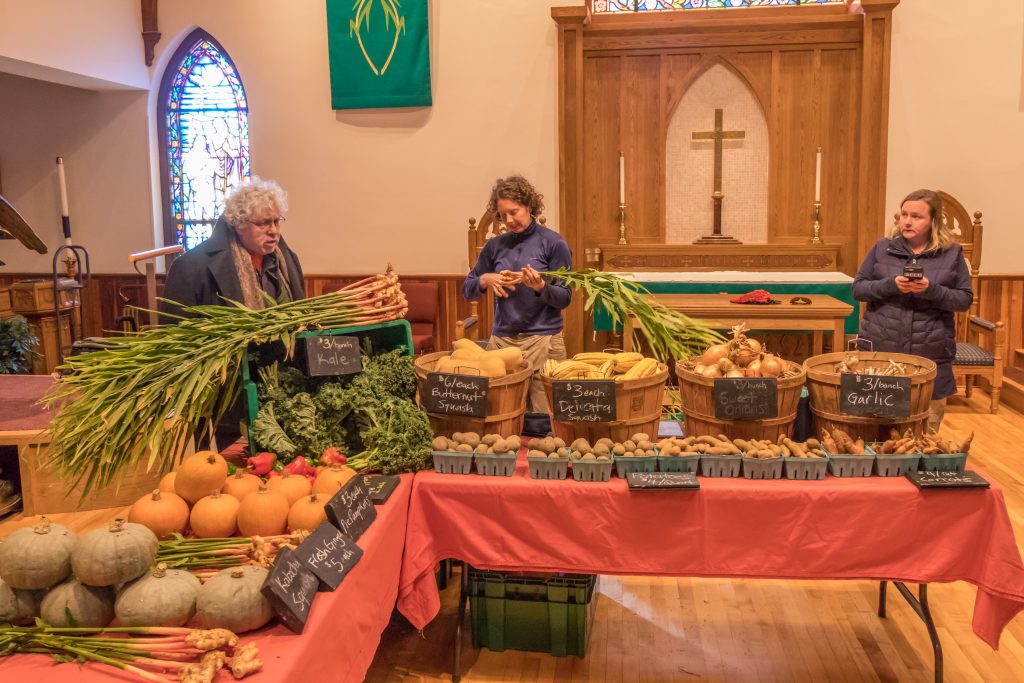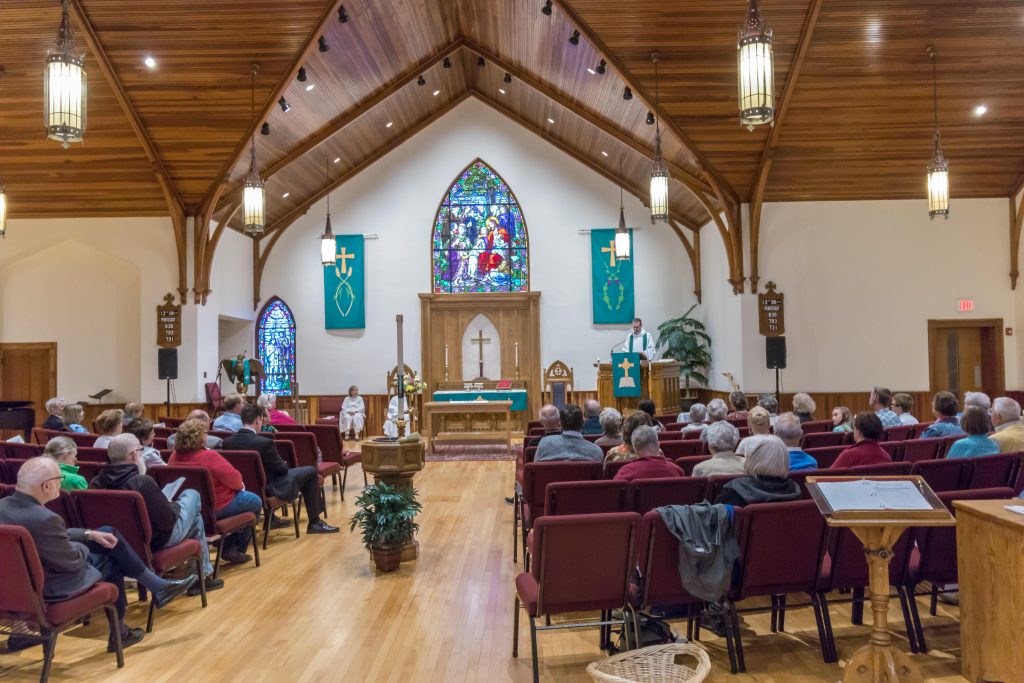
On November 18, 2014, at the urging of a parent, the property committee at Zion Lutheran Church in Pittsfield, Massachusetts voted to do something quite radical for the time: we voted to create a “Pray & Play” area in our sanctuary where kids could feel comfortable and where young families could worship together with age-appropriate activities. While it might have been the combination of bean bag chairs, ELWs, foam blocks, and books about Martin Luther and Ella Fitzgerald that initially caught a newcomer’s eye, what most people seemed to notice first was that we had removed two adjacent pews in the center of our sanctuary to make room.
Just two years later, we removed the remaining forty-six pews.
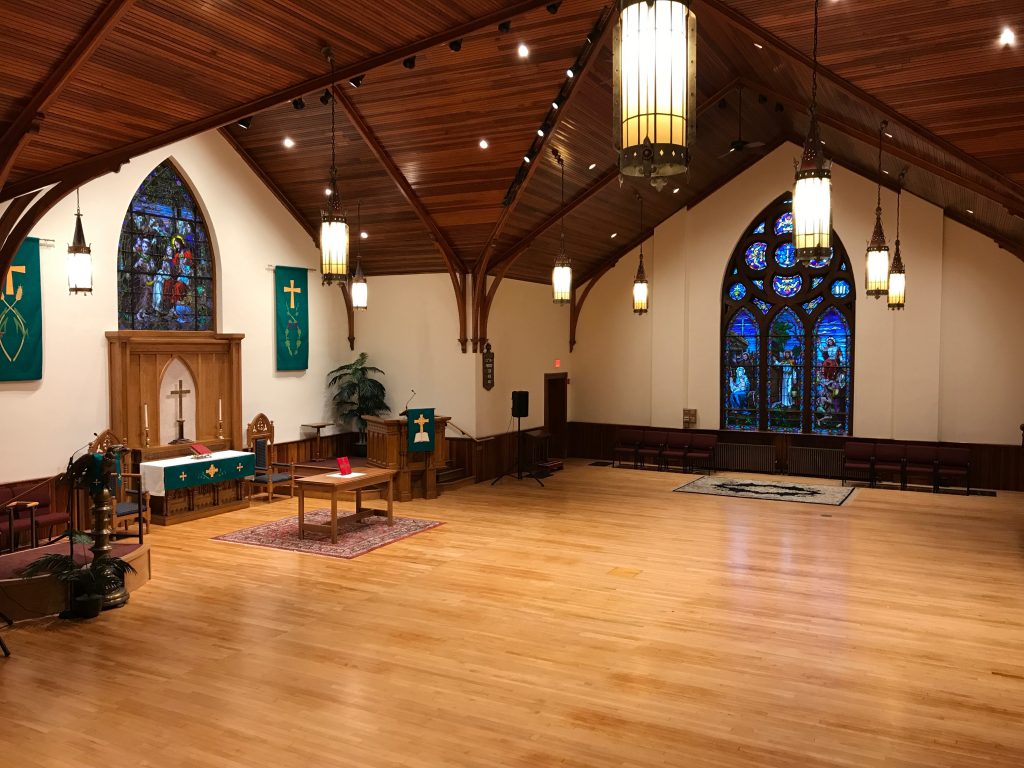
In 2017, the people of Zion Lutheran Church, recognizing that our 1892 Neo-gothic sanctuary was overdue for a major investment, completed a $1.2 million project that transformed it into a renewed place for worship and community. While this included adding accessible routes and restrooms, replastering and repainting the walls, replacing all the lighting, and even adding air-conditioning, what most people (still) seem to notice first is that we removed all the pews and replaced them with chairs.
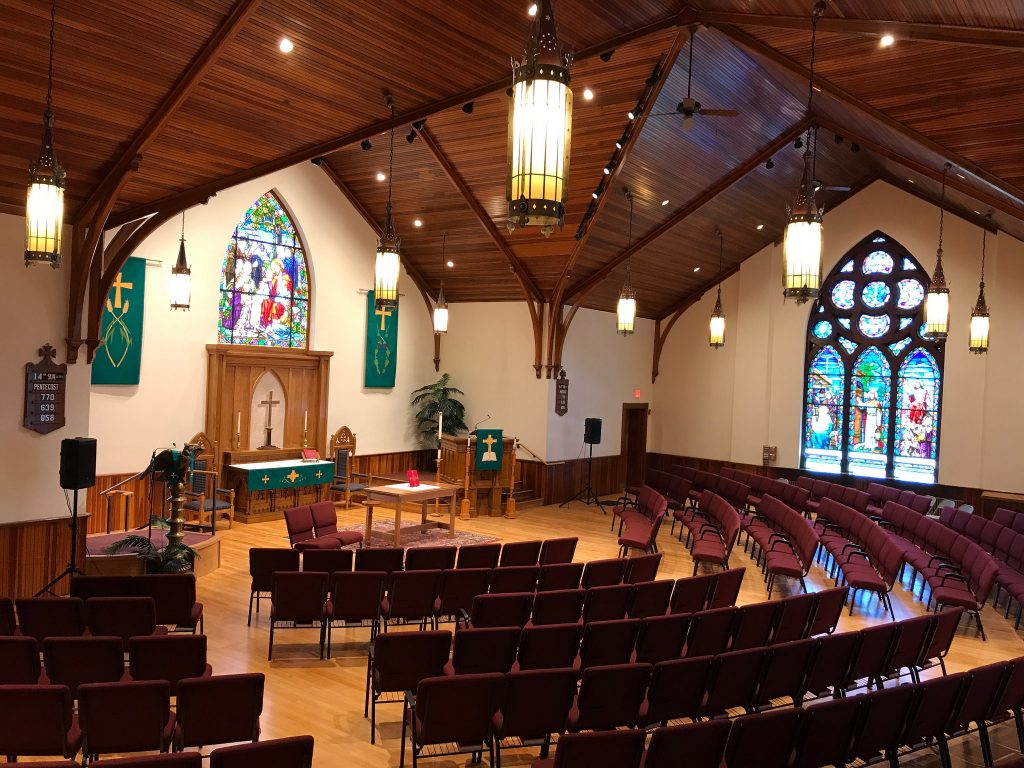
This is my testimony to you: it feels good to worship in a sanctuary in which the seating is more than twenty percent filled. The singing is fabulous when the community worships close together. Need space for a baptism and six confirmations at an Easter Vigil? Just make the open space between the font and the chairs larger. Need space for piano, string bass, and drums for Jazz Vespers, our monthly evening prayer? Just move the altar table back a few feet.
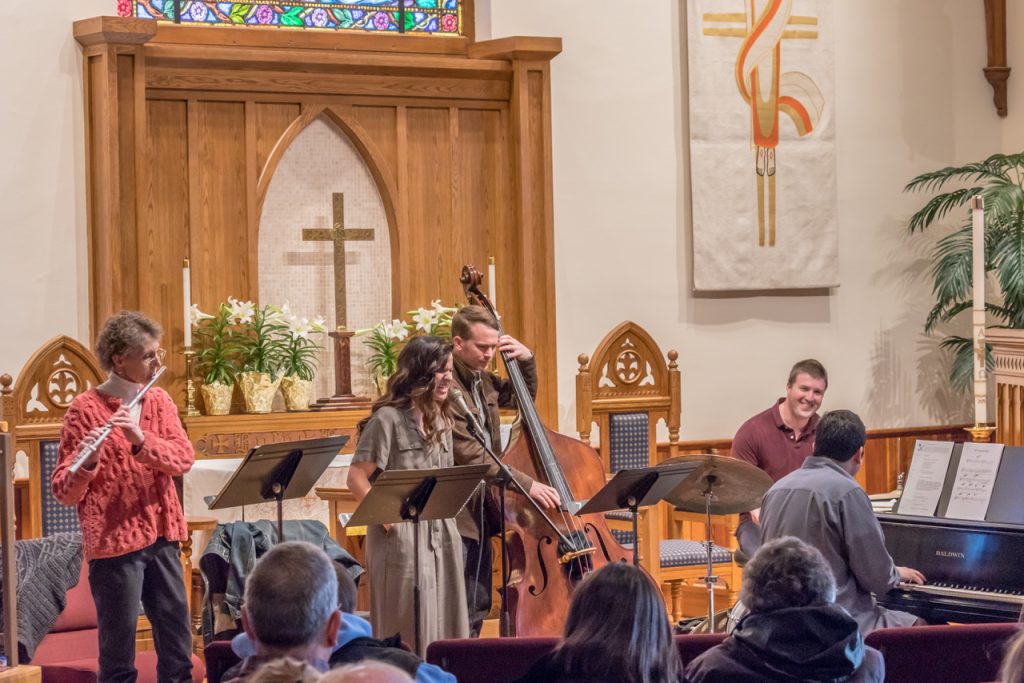
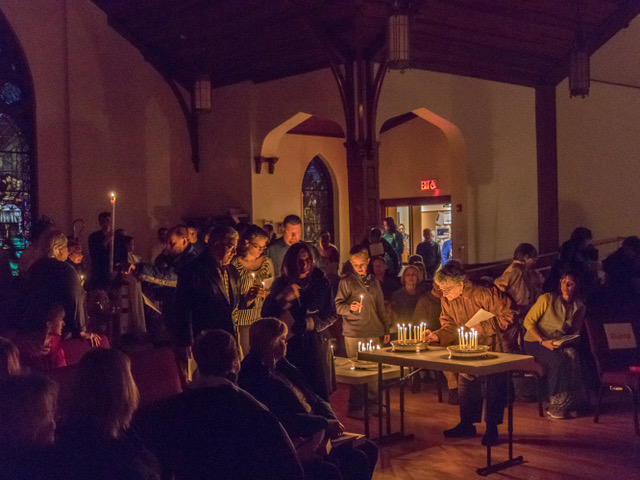
Because nothing is nailed down, Zion Lutheran Church has been able to host public concerts, theatre rehearsals, interviews, annual meetings, farmers markets, community dinners, and events for children and youth. In our first year, over twelve thousand people have walked through our doors for worship or a community event in our Common Room, the name for our sanctuary.
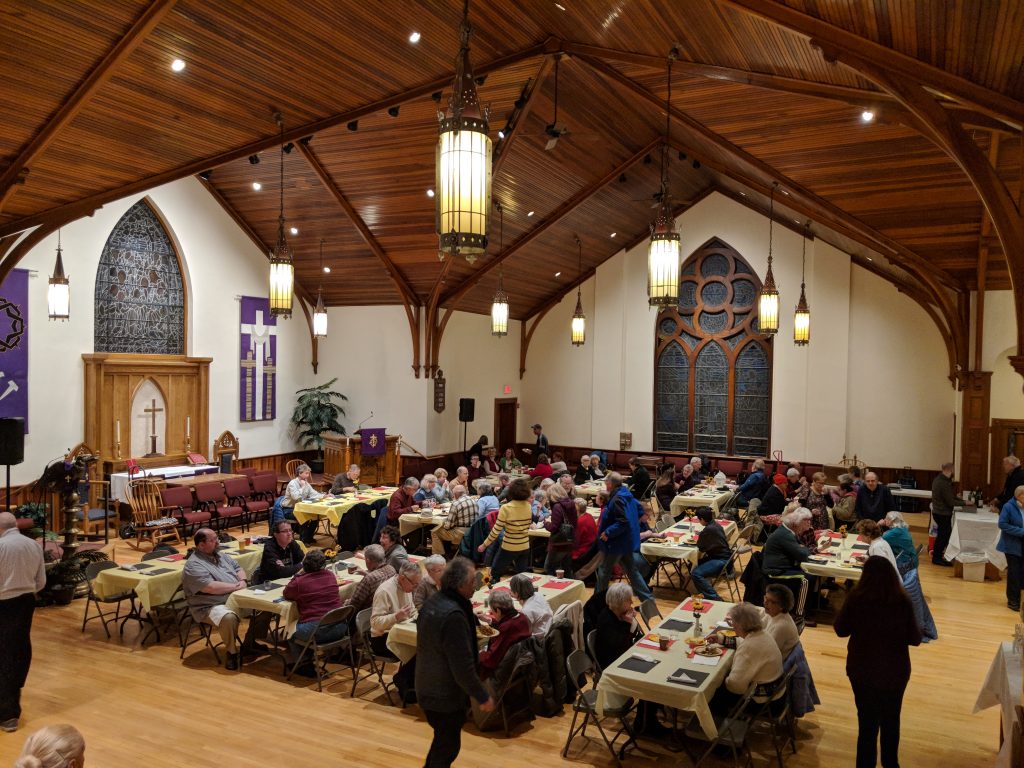
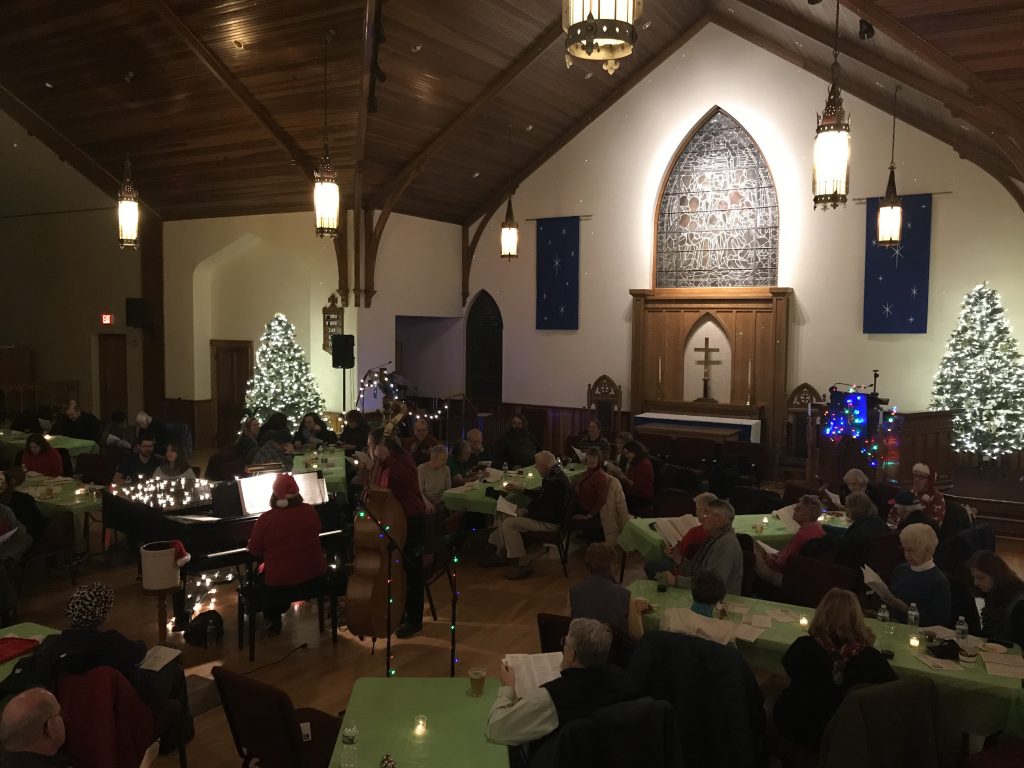
Last year, at an indoor farmers market we host, I was asked with some amount of disbelief, “Wait a second—is this still a real church?” (I replied with an emphatic “yes!”) But I’ll admit that there have been more than a few Sunday mornings when I’ve arrived to worship in a sanctuary that looks more exhausted than sacred. First, I gently remind myself that I don’t always look so good, either—and I remember that in our worship, our hearing of God’s Word, our praying, and our singing, not only are we renewed to serve our community, but so is this Common Room. For that, I give extra thanks and praise.
